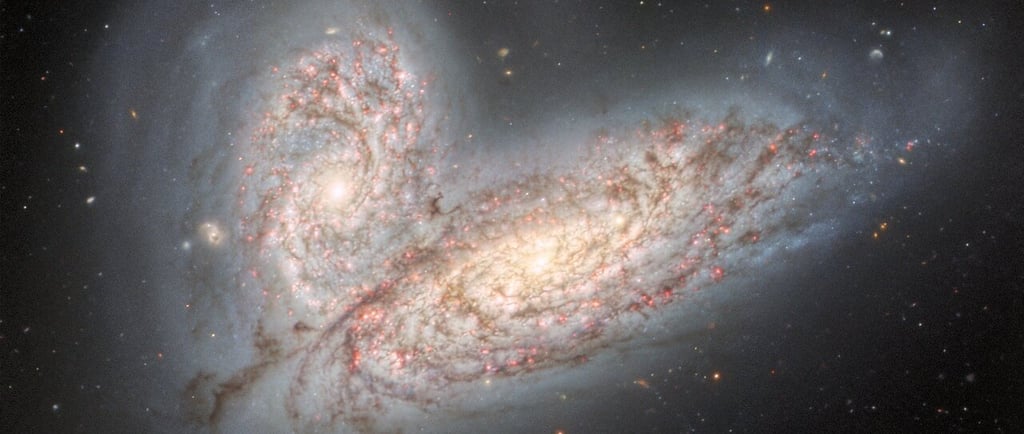NGC 4567 and NGC 4568: The Butterfly Galaxies


Introduction to NGC 4567 and NGC 4568
Among the vast expanse of the universe, various celestial bodies capture our imagination and curiosity. One such remarkable duo is NGC 4567 and NGC 4568, often referred to as the Butterfly Galaxies due to their distinctive shape. Located approximately 60 million light years away in the constellation Virgo, these unbarred spiral galaxies exemplify the unique structural formation of closely interacting galaxies. Their mesmerizing beauty and complex interactions offer a fascinating glimpse into the wonders of our universe.
Characteristics of the Butterfly Galaxies
NGC 4567 and NGC 4568 are notable not only for their physical appearance but also for their intriguing gravitational interplay. As part of the Siamese Twins galaxy pair, these two galaxies are engaged in a gravitational dance that affects their structure and evolution. The spiral arms of these galaxies display stunning patterns, indicating regions of star formation and highlighting the dynamic nature of galactic interactions.
The distance of these galaxies puts them at a scale that is daunting to comprehend, yet the visible light we can observe allows astronomers to study their composition and behavior. With the use of advanced telescopes, significant insights have been gained regarding the star populations and gas dynamics within the Butterfly Galaxies. Such observations reveal the ongoing processes that influence the lifecycle of galaxies, from formation to eventual merging.
The Importance of Studying NGC 4567 and NGC 4568
Understanding galaxy pairs such as NGC 4567 and NGC 4568 expands our knowledge of cosmic evolution. They serve as critical laboratories where scientists can observe interactions that are theoretical in nature when other distant galaxies are analyzed. The study of these galaxies sheds light on important astrophysical concepts, including how gravitational interactions can lead to changes in stellar formation rates and potential merging events.
In addition, by examining the Butterfly Galaxies, astronomers have the opportunity to explore the distribution of dark matter, as gravitational influences are observed even in regions where visible matter is sparse. This understanding is crucial in piecing together the overall structure of the universe and the fundamental forces at play.
The Butterfly Galaxies stand as a testament to the intricate dance of cosmic structures, reflecting the beauty and complexity of the universe we inhabit. With ongoing research and the help of cutting-edge technology, our comprehension of these celestial marvels continues to grow, further enriching our understanding of the cosmos.
